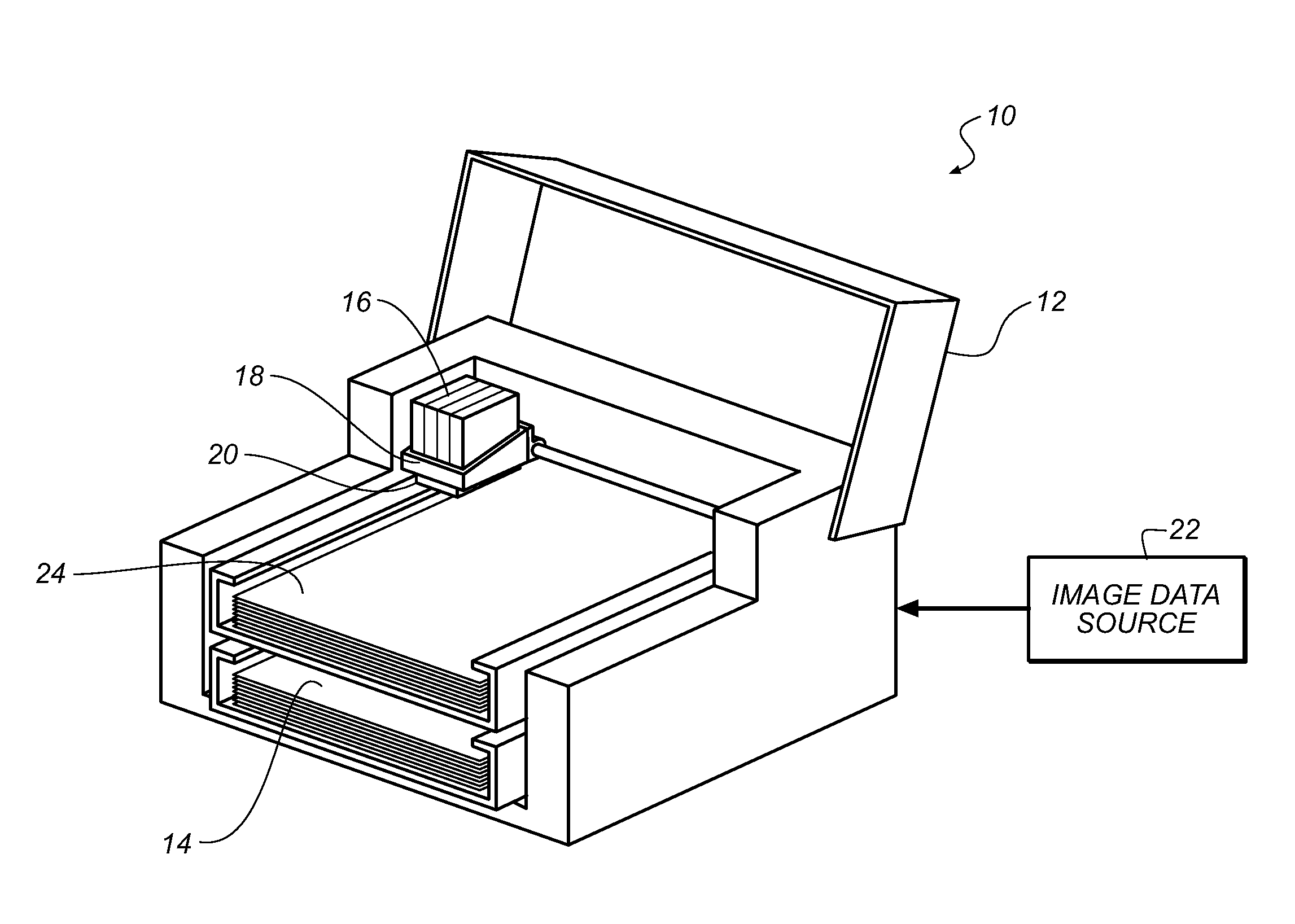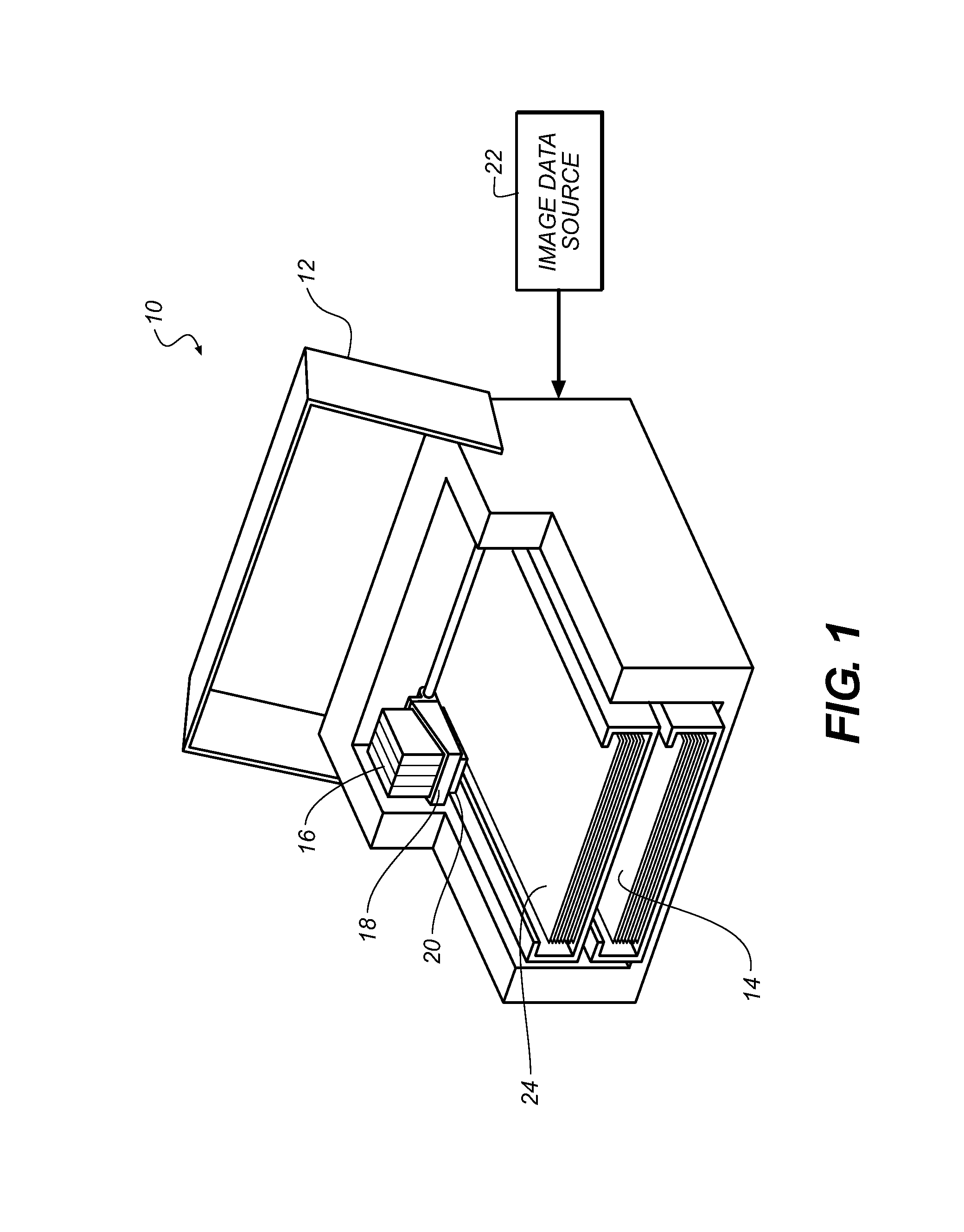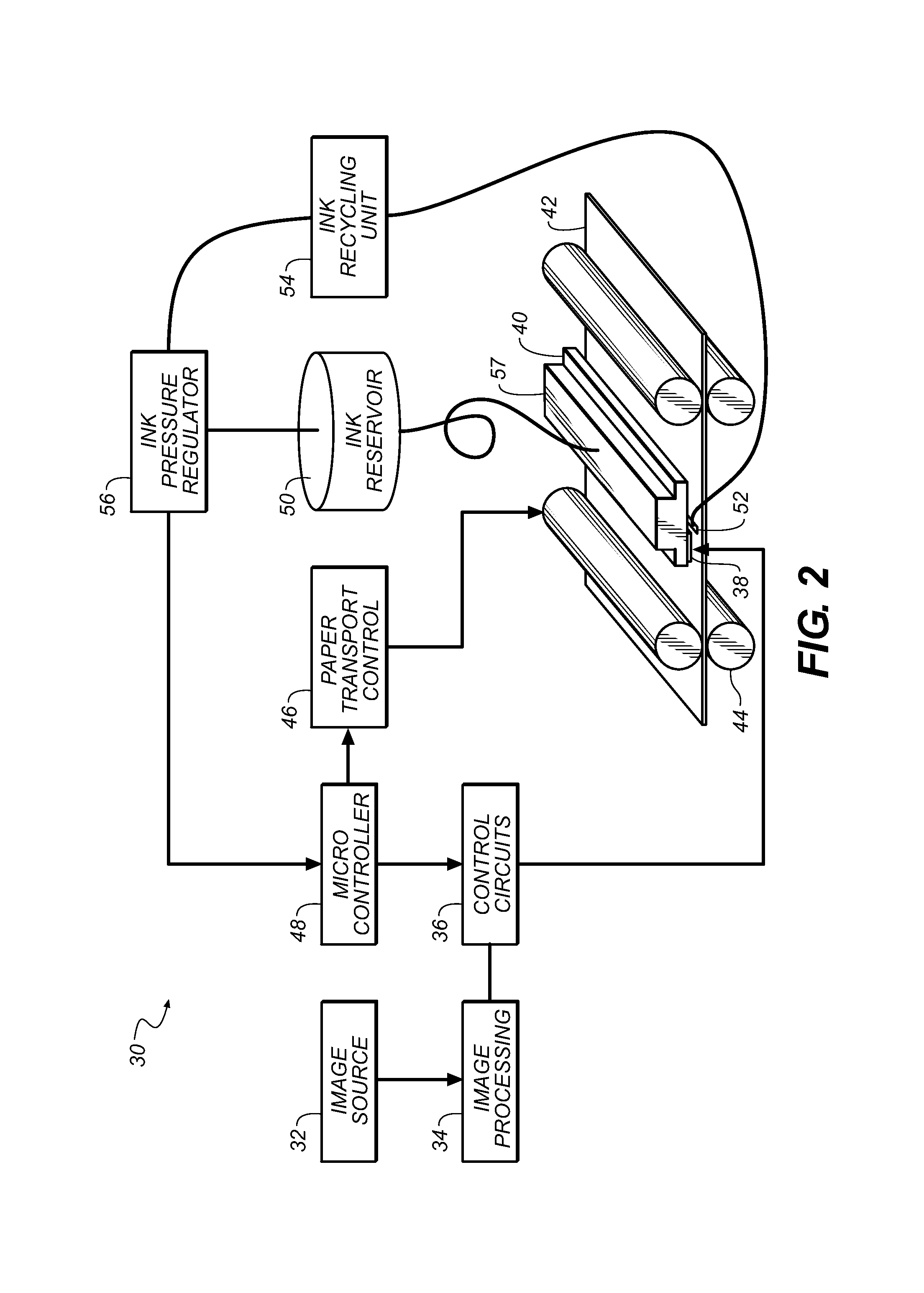Printhead for inkjet printing device
a printing device and digital control technology, applied in printing, coatings, metal material coating processes, etc., can solve the problems of resistive heaters in thermally actuated drop on demand inkjet printheads operating in an extremely harsh environment, resistive heaters in thermally actuated drop on demand inkjet printheads can fail, heaters will increase in resistance and ultimately fail, etc., to achieve the effect of improving chemical resistance and thermal stability
- Summary
- Abstract
- Description
- Claims
- Application Information
AI Technical Summary
Benefits of technology
Problems solved by technology
Method used
Image
Examples
example 1a-1f
[0071]This example demonstrates the use of an adhesion promoting layer in combination with an improved corrosion resistant laminate film comprised of multiple layers each consisting essentially of HfO2 or Ta2O5, and demonstrates at least one preferred composition of a corrosion resistant laminate as described in the invention. This example also demonstrates that the relative thickness, order and number of the refractory oxide layers in the invention is important with regard to achieving optimal results, and that the observed improved corrosion resistance of the laminate films, and in particular of hafnium oxide rich HfO2—Ta2O5 laminate films, is novel and could not have been predicted.
[0072]In examples 1A-1F the 200 nm of silicon oxide layer of the silicon wafer substrate described above is an adhesion promoting layer that enables corrosion resistant surface coatings and films that are deposited on top of the silicon wafer to adhere well to the wafer substrate. The outermost layer o...
example 2
[0077]This example demonstrates the use a wear and abrasion resistant coating on a chemically resistant, corrosion resistant laminate film as described in an embodiment of the invention.
[0078]Two silicon wafers with multilayer corrosion resistant films identical to example 1C were fabricated and one of the wafers was overcoated with 400 nm of an abrasion resistant coating containing silicon, nitrogen, and carbon at 320° C. The overcoat film containing silicon, nitrogen and carbon was prepared by chemical vapor deposition methods like those described by Bau et al (S. Bau, S. Janz, T. Kieliba, C. Schetter, S. Reber, and F. Lutz; WCPEC3-conference, Osaka, May 11-18(2003); “Application of PECVD-SiC as Intermediate Layer in Crystalline Silicon Thin-Film Solar Cells”). The 200 nm of silicon oxide layer on the silicon wafer substrate is an adhesion promoting layer that is at least 0.2 nm in thickness and enables corrosion resistant surface coatings and films that are deposited on top of th...
example 3
[0079]This example demonstrates the use of an adhesion promoting layer in combination with a corrosion resistant laminate films comprised of multiple layers each consisting essentially of ZrO2 or Ta2O5. This example also demonstrates corrosion resistant laminate films where a thin film layer of ZrO2 is substituted for HfO2 in the laminate and where HfO2 and ZrO2 are both present as thin films in a laminate structure along with Ta2O5. In addition, this example demonstrates at least one additional preferred composition of a corrosion resistant laminate as described in the invention.
[0080]The outermost layer of the wafer substrates in examples 3A-3E, comprised of a SiO2 adhesion promoting layer, was then coated with a corrosion resistant film. Various types of corrosion resistant films were deposited for evaluation and the various films are given in examples 3A through 3E. Films in examples 3A-3E were deposited by atomic layer deposition methods using the methods described by Liu et al...
PUM
| Property | Measurement | Unit |
|---|---|---|
| thickness | aaaaa | aaaaa |
| total thickness | aaaaa | aaaaa |
| total thickness | aaaaa | aaaaa |
Abstract
Description
Claims
Application Information
 Login to View More
Login to View More - R&D
- Intellectual Property
- Life Sciences
- Materials
- Tech Scout
- Unparalleled Data Quality
- Higher Quality Content
- 60% Fewer Hallucinations
Browse by: Latest US Patents, China's latest patents, Technical Efficacy Thesaurus, Application Domain, Technology Topic, Popular Technical Reports.
© 2025 PatSnap. All rights reserved.Legal|Privacy policy|Modern Slavery Act Transparency Statement|Sitemap|About US| Contact US: help@patsnap.com



